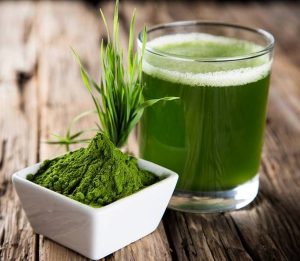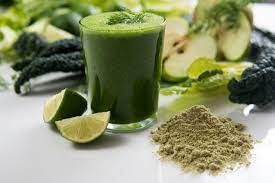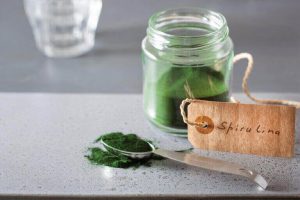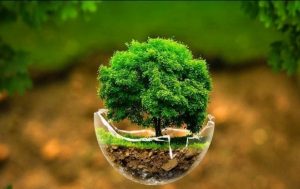Despite all the progress that has been made at the global level and is developing every day, there is one common pain in the world, and that is the pain of not knowing. Not knowing, not recognizing, and lagging behind this ever-increasing global development by itself can involve the human body in problems that seem unsolvable, but at the same time, it is solvable, which is better to call it healing to understand today’s societies.
So it is better to say that spirulina algae, known as green gold, plays the role of a healer in many fields. With this introduction, we will discuss the scientific discussion and analysis of this unique algae.

Spirulina are multicellular and filamentous blue-green microalgae that belong to two distinct genera, Spirulina and Arthrospira. Regarding the species in spirulina algae, it should be said that it consists of about 15 species, among which Arthrospira platensis is the most. Arthrospira platensis is a gram-negative filamentous cyanobacterium. This bacterium is a non-nitrogen-fixing photoautotroph. In China’s Chenghai Lake, soda lakes in East Africa and alkaline subtropical lakes are available and can be harvested.
As mentioned, spirulina is a symbiotic blue-green microalgae, multicellular and filamentous with symbiotic bacteria, which can be rod-shaped or disc-shaped. Their main photosynthetic pigment is phycocyanin, which is blue in color. These bacteria also contain chlorophyll a and carotenoids. Some contain the pigment phycotrin, which gives the bacteria a red or pink color. Spirulina is photosynthetic and therefore autotrophic. Spirulina reproduces by double fission. The spiral shape of filaments (or trichomes) is characteristic of the genus, and only in a liquid medium or culture medium, the presence of gas-filled vacuoles in the cells, along with the spiral shape of filaments, leads to floating mats. Trichomes are 50-500 µm long and 3-4 µm wide. However, cyanobacteria have a cell wall similar to gram-negative bacteria:

The protoplasts in spirulina have been investigated by several researchers who succeeded in obtaining these protoplasts in spirulina as a result of extensive research. The surface of spirulina is smooth so that it can be easily digested by simple enzyme systems.
So, so far we have found out that Spirulina is a type of blue-green algae from the cyanobacteria branch. This algae grows in the waters of tropical and subtropical regions, which have salty water or alkaline and brackish water and are rich in carbonate and bicarbonate. Spirulina is mostly found and produced in Africa, Asia, South America and Central America and can be used as animal or human food. Today, spirulina is mostly used as a food supplement in the pharmaceutical industry in the form of tablets or powder. It is also used in aquaculture, aquarium and poultry industries. This algae grows naturally in many lakes, but there are many activities for the artificial production of spirulina algae. In many parts of the world, companies are engaged in the production and supply of this blue-green algae for human and animal consumption, of which FAO is one of the most famous.

Spirulina are filamentous cyanobacteria suspended in water and have a cylindrical and spiral structure. Spirulina growth takes place at a pH of 8.5 and above and a temperature of about 30 degrees Celsius. This living organism is autotrophic or self-growing and makes its own food without the need of organic carbon and other living organisms. In order to grow spirulina, substances such as potassium nitrate, sodium bicarbonate, potassium phosphate, sea salt and iron sulfate should be added to the water.
Dried spirulina is rich in protein and has between 51 and 70% protein. This product also contains 24% carbohydrates, 8% fat and 5% water along with various vitamins and minerals.
This algae has been named as a superfood by the American Space Agency (NASA) and this organization is trying to prepare useful food rations for astronauts using this algae.
NASA is said to have included spirulina in the diet of astronauts to consume during space missions. It is also consumed by athletes during competitions, because it makes them more efficient and makes their body regenerate and strengthen in a short period of time.
Natural habitat, resource and growth
The largest spirulina lakes in Central Africa are around Lake Chad and Lake Niger in East Africa along the Great Rift Valley. The conditions in ordinary water are one of the many conditions for spirulina to grow. The algal species of Bodou and Rombou lakes in Chad have a stable substrate for spirulina cultivation. In spirulina production, a new seasonal cycle begins when the decomposed algae release their nutrients or when more nutrients are released into the lake. Spirulina grows in soil, marshes, freshwater, saltwater, seawater, and Hot springs are found.
Saline water (over 30 g/L) with a high pH (8.5-11.0) favors good spirulina production, especially where there is a high level of solar radiation at high altitudes in the tropics. Spirulina platensis and Spirulina maxima grow in highly alkaline lakes in Africa and Mexico where cyanobacteria populations are virtually non-existent.
The higher the pH and conductivity of the water, the more likely it is that Spirulina will dominate the environment. This is the case in the lakes of the Rift Valley in East Africa, where the pH can reach values close to 11 and sodium carbonate is abundant. Spirulina platensis is isolated from water that contains 85 to 270 grams of salt per liter and the optimal growth is between 20 to 70 grams of salt per liter. A relatively high cytoplasmic pH (4.2 to 8.5) can show the ability of this microorganism. Spirulina, like most Cyanobacteria is an obligate photoautotroph, that is, it cannot grow in the dark on an environment that contains organic carbon compounds that reduce carbon dioxide in the light and are mainly absorbed. Nitrates are the main absorption product of spirulina glycogen photosynthesis. Spirulina shows that its optimal growth is between 35 and 37 degrees Celsius in laboratory conditions. Outside the lab, temperatures up to 39°C for several hours do not seem to harm blue-green algae or their photosynthesis.
The ability of heat-loving or heat-resistant spirulina strains can be cultivated at temperatures between 35 and 40 degrees Celsius, this feature has the advantage of removing mesophilic microbial contaminants. The minimum temperature at which spirulina growth occurs is around 15°C during the day. At night, spirulina can tolerate relatively low temperatures. The resistance of spirulina to UV radiation seems to be relatively high.
Spirulina is the most common and widespread of all similar algae, and many published researches and public health decisions refer to this particular species because it grows in water, is easy to harvest and process, and has a micronutrient content. It is a significant nutrient. In many African countries, it is used as a human. As a food, spirulina is an important source of protein that is simply collected from natural water, dried and eaten. Hence, it has gained considerable popularity in the human health food industry and in many Asian countries.
Spirulina has also been used as a dietary supplement, poultry feed ingredient, and increasingly as a protein and vitamin supplement for aquatic animals. Spirulina appears to have significant potential for development, especially as a Small-scale production is very effective for increasing nutrition, developing livelihoods and reducing environmental pollution statistics. The production of spirulina was recorded for the first time in China, and its production quickly reached 41,570 tons in 2004, which had a value of about 7.6 million US dollars and 16.6 US dollars. However, there are no specific figures for production in other parts of the world. This shows that despite the widespread publicity about spirulina and its benefits, it is still unknown globally. Serious attention to spirulina algae as a potential key product for the development of global health and solving the food crisis and its exploitation, especially in coastal and alkaline areas, is important.
Spirulina has many uses, especially in the agricultural industry. Today, when agriculture is severely affected by the increasing salinity and lack of water and is facing serious problems, it can play a very important role in providing agricultural needs for national governments as well as intergovernmental organizations. Evaluating the potential of spirulina to meet the needs related to food security is very useful and can also be a tool for the development of relations between countries and international organizations that are connected with the world.

needs
The first requirement – in line with the optimal production of spirulina, a comprehensive practical guide should be prepared on a small scale, which can provide as a basis for the growth and development methods of this unique algae. A scientific guide that teaches the small-scale production of spirulina and also predicts ways to use spirulina as food supplements in rural and urban communities whose main diet is weak or insufficient and put it into action.
The second need – in cases where agricultural crops face a shortage of land or water resources, there is a need to provide a short-term solution by providing an integrated solution in order to provide animal feed, aquaculture production and other such matters on a small scale. and mid-term for emergency situations in which a stable supply of high protein in feed, whether in livestock, poultry, aquatic or even human feed, is required.
The third need is to better monitor the global production of spirulina and the product processing process. Currently, the main production channels of spirulina include only China, and this is obviously not enough. It should be noted that it will be more beneficial if the production is divided separately, that is, different scales of development, for example, intensive, semi-intensive and extensive, make it possible for different participants or interested parties to have less conflict in the beginning and This can lead to efforts to combine experience and increased knowledge for the comprehensive development of spirulina production technologies and their proliferation as a global need to create clear guidelines on the food safety aspects of spirulina as far as the ultimate goal of spirulina production, which is to contain the risks Human health can be managed as much as possible during production and processing.
Finally, expanding the range of information can be very effective. The spread of information, especially in the virtual space, in the shadow of the ever-increasing growth of the information society on the Internet and its deep possibilities in the field of expanding awareness at the global level, can be very useful in identifying the unique benefits and uses of spirulina. . In fact, an organization of web-based resources that provides the possibility of gathering strong scientific information and statistics regarding spirulina is an essential requirement. For public access, there are currently a number of websites related to spirulina, but not enough.
It is hoped that Roya Jalbak Pars Company can provide effective services and information to interested people on this website.










